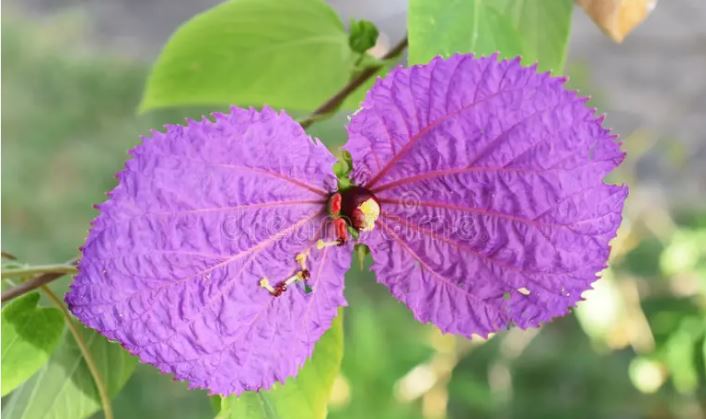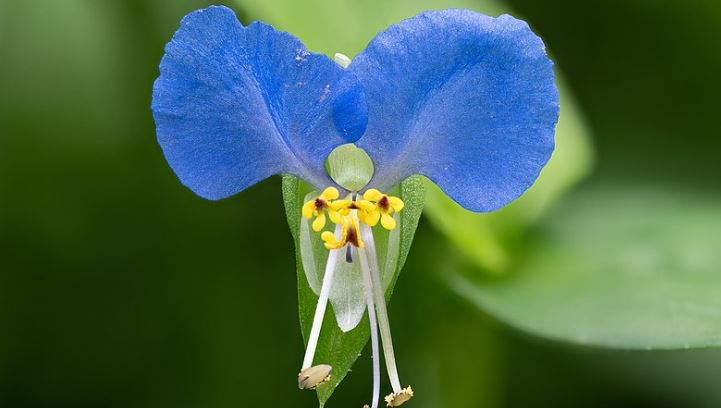
Flowers with two petals are rare in nature, as most blooms have multiple petals or none, but certain species produce two prominent petals, often with a third, less conspicuous one. These flowers, typically small and delicate, display colors like blue or violet, paired with green foliage. They thrive in various climates, often USDA zones 3–11, and are valued for their unique appearance in gardens or natural settings.
These flowers often grow in partial shade, preferring moist, well-drained soil, though some tolerate drier conditions. Their low, sprawling, or climbing growth makes them suitable for ground cover, borders, or trellises. Many are annuals or perennials, with some self-seeding readily, requiring control to prevent invasiveness in fertile environments.
Blooming primarily in summer, their two-petaled structure attracts small pollinators like bees and butterflies. The short-lived blooms, often lasting a day, add fleeting beauty to shaded or wetland areas. Some species have edible leaves or medicinal uses, enhancing their value in foraging or herbal traditions.
Ecologically, these flowers support biodiversity by providing nectar and habitat in damp or shaded ecosystems. Their adaptability to low light suits urban or woodland gardens, but their spreading habits can challenge native plants if unchecked. Careful management ensures they enhance rather than dominate landscapes.
Their subtle charm and ecological roles make them ideal for wildflower meadows or naturalistic designs. With proper care, such as consistent moisture and weed control, they offer a distinctive aesthetic, blending functionality with delicate, minimalist beauty in diverse garden settings.

Flowers With 2 Petals
Creeping Dayflower
Creeping dayflower has two vibrant blue petals (with a tiny white lower petal) and heart-shaped green leaves on low, sprawling stems. Native to tropical Americas, it thrives in partial shade and moist, well-drained soil (zones 7–11). Blooming summer, it attracts small bees and is edible, used in salads, but can spread aggressively, needing control.
Whitemouth Dayflower
Whitemouth dayflower features two bright blue petals (small white petal below) on upright stems with narrow green leaves. Native to North America, it grows in partial shade and wet, fertile soil (zones 4–9). Blooming summer, it attracts pollinators and suits wetland gardens, with edible leaves popular in foraging.
Climbing Dayflower
Climbing dayflower produces two azure petals (third reduced) with broad green leaves on twining stems. Native to Central America, it thrives in shade and moist soil (zones 7–11). Blooming summer, it attracts butterflies and adds tropical charm to trellises, but requires regular watering and monitoring for spread.
Skyblue Dayflower
Skyblue dayflower bears two vivid blue petals (tiny white petal) and glossy green leaves on compact stems. Native to Mexico, it grows in partial shade and well-drained soil (zones 8–11). Blooming summer, it attracts bees and is ornamental in borders, needing consistent moisture for vibrant blooms.
Marsh Dayflower
Marsh dayflower has two pale blue petals (small white petal) and elliptic green leaves on low, creeping stems. Native to Asia, it thrives in shady, wet areas (zones 7–10). Blooming summer, it attracts insects and is edible, used in local dishes, but needs consistently moist soil to thrive.
Yellow-Blue Dayflower
Yellow-blue dayflower features two yellow-blue petals (third reduced) with narrow green leaves on sprawling stems. Native to Africa, it grows in partial shade and dry, sandy soil (zones 8–11). Blooming summer, it attracts bees and is drought-tolerant, ideal for rock gardens, but spreads quickly.
Forest Dayflower
Forest dayflower produces two blue petals (tiny white petal) with ovate green leaves on low stems. Native to tropical Asia, it thrives in shade and moist soil (zones 8–11). Blooming summer, it attracts pollinators and works as ground cover, but its invasiveness requires containment in gardens.
River Dayflower
River dayflower has two light blue petals (third reduced) and lance-shaped green leaves on creeping stems. Native to Central America, it grows in partial shade and wet soil (zones 7–11). Blooming summer, it attracts bees and suits pond edges, with edible leaves used in teas.
Slender Dayflower
Slender dayflower bears two soft blue petals (small white petal) with thin green leaves on delicate stems. Native to South America, it thrives in shade and moist, fertile soil (zones 8–11). Blooming summer, it attracts small insects and is ornamental, but needs weed control to stand out.
Tropical Dayflower
Tropical dayflower features two deep blue petals (third tiny) and broad green leaves on upright stems. Native to Central America, it grows in partial shade and rich soil (zones 9–11). Blooming summer, it attracts butterflies and adds lushness to gardens, requiring consistent moisture.
Coastal Dayflower
Coastal dayflower has two blue-violet petals (small white petal) with oval green leaves on sprawling stems. Native to Asia, it thrives in partial shade and sandy, moist soil (zones 7–10). Blooming summer, it attracts bees and suits coastal gardens, with edible parts used in herbal remedies.
Blue Dayflower
Blue dayflower produces two bright blue petals (third reduced) with heart-shaped green leaves on low stems. Native to tropical Americas, it grows in shade and wet soil (zones 8–11). Blooming summer, it attracts pollinators and is edible, used in salads, but can invade damp areas, needing management.